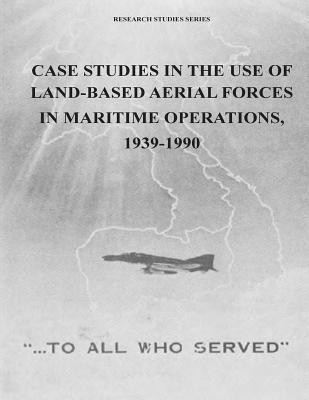
- We will send in 10–14 business days.
- Author: U S Air Force
- Publisher: CreateSpace Independent Publishing Platform
- Year: 2015
- Pages: 194
- ISBN-10: 1507746172
- ISBN-13: 9781507746172
- Format: 21.6 x 28 x 1 cm, softcover
- Language: English
- SAVE -10% with code: EXTRA
Case Studies in the Use of Land-Based Aerial Forces in Maritime Operations, 1939-1990 (e-book) (used book) | bookbook.eu
Reviews
Description
This is the fourth in a series of research studies-historical works that were not published for various reasons. Yet, the material contained therein was deemed to be of enduring value to Air Force members and scholars. These were minimally edited and printed in a limited edition to reach a small audience that may find them useful. We invite readers to provide feedback to the Air Force History and Museums Program.The author, contract historian William S. Hanable, president of Research North, based in Westport, Washington, completed the final draft manuscript two years ago, in December 1996. Through a series of case studies, spanning a period of more than fifty years, he examines in detail the development and employment of land-based air power in maritime operations. Although the emphasis is on World War II, modern examples of land-based air power, through the end of the Cold War, are also examined.His conclusions are that historically land-based air forces seldom received priority in operations against maritime targets, nor-despite their demonstrated achievements in the crucible of battle-have the land-based forces been "optimally organized, equipped, andtrained for air-sea warfare when hostilities began." Nonetheless, over the period covered inthis volume, land-based air power has clearly transformed the nature of naval warfare. Theinfluence of that change in the years ahead remains to be seen.
EXTRA 10 % discount with code: EXTRA
The promotion ends in 17d.13:39:23
The discount code is valid when purchasing from 10 €. Discounts do not stack.
- Author: U S Air Force
- Publisher: CreateSpace Independent Publishing Platform
- Year: 2015
- Pages: 194
- ISBN-10: 1507746172
- ISBN-13: 9781507746172
- Format: 21.6 x 28 x 1 cm, softcover
- Language: English English
This is the fourth in a series of research studies-historical works that were not published for various reasons. Yet, the material contained therein was deemed to be of enduring value to Air Force members and scholars. These were minimally edited and printed in a limited edition to reach a small audience that may find them useful. We invite readers to provide feedback to the Air Force History and Museums Program.The author, contract historian William S. Hanable, president of Research North, based in Westport, Washington, completed the final draft manuscript two years ago, in December 1996. Through a series of case studies, spanning a period of more than fifty years, he examines in detail the development and employment of land-based air power in maritime operations. Although the emphasis is on World War II, modern examples of land-based air power, through the end of the Cold War, are also examined.His conclusions are that historically land-based air forces seldom received priority in operations against maritime targets, nor-despite their demonstrated achievements in the crucible of battle-have the land-based forces been "optimally organized, equipped, andtrained for air-sea warfare when hostilities began." Nonetheless, over the period covered inthis volume, land-based air power has clearly transformed the nature of naval warfare. Theinfluence of that change in the years ahead remains to be seen.


Reviews